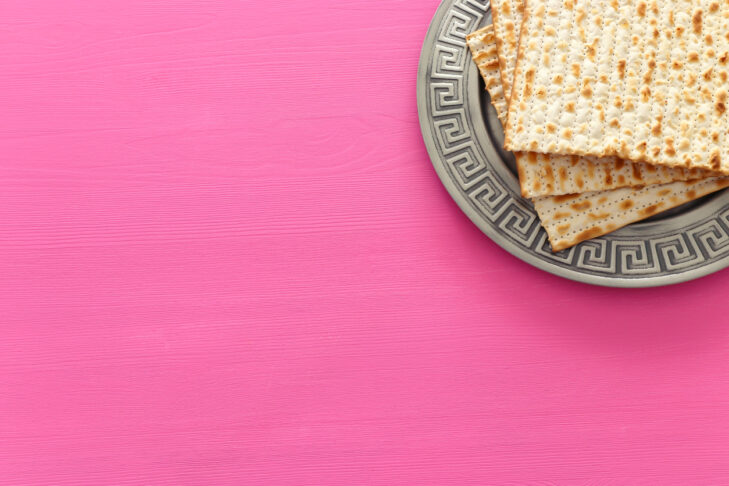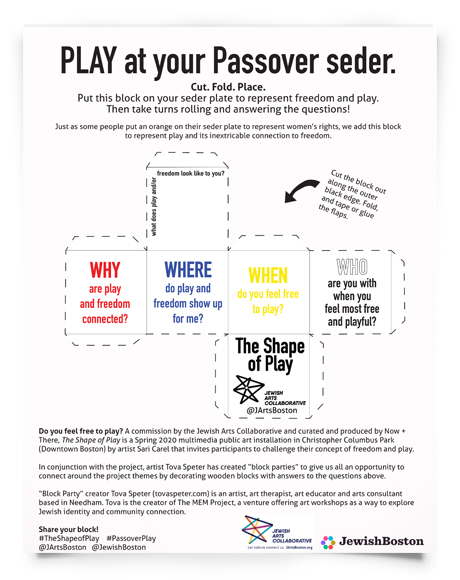When I originally sat down to write this, I had a very different idea of what I would write.
I thought I would tell you about my personal tradition of hosting a Sephardic seventh night seder. I envisioned regaling you with the details of how I created my own tabletop Haggadah (inspired by this awesome Moishe House post) and how I intentionally host this seder not only for the alliterative power of that night, but also because for me, the seventh night has become synonymous with gathering my closest friends to celebrate the holiday. I had grand visions for this post but, alas, given our current public health situation, it looks like Passover seders will not be happening this year. Or, at the very least, they’ll look very different from what we’re used to.
But to keep this from going into the virus that shall not be named, I still think there is immense value in adding an element of your own fun to this Passover season, especially when this time of social distancing can make both play and freedom feel quite distant. I think it’s even more crucial that we make time to exercise our creative, playful muscles as much as possible. When I take a look at my social media feed, it shows my clever, creative friends are popping out of the woodwork left and right, sharing their recipes, craft projects, musical chops and so much more as a way to remain connected and keep up spirits.
Which brings me back to my original story: Sara’s Sephardic Seventh Night Seder. I started hosting this seder with the help of my friend Naomi and the generous financial support of Moishe House Without Walls two years ago. It began as a way to bring my best friends together to celebrate the holiday of Passover and tell the Exodus story in a way that felt relevant to us.
We held it on the seventh night so as to not interfere with the variety of competing Passover plans that often pop up for the first two nights. (Later, I also found out that it’s a tradition in Hasidism to hold a ritual seder at the end of Passover, too—I love unintentionally engaging in cool rituals!) And, of course, the food was inspired by my love of the Sephardic culinary tradition; the menu was created to give everyone a break from the usual Ashkenazi fare. The whole point of this seder, from the Haggadah to the day it took place to the food, was to bring a bit more fun into the holiday. A bit more play, if you will. And it has become my friends’ favorite gathering of the year.
The truth is, I think Passover is the ultimate Jewish holiday of play. While Purim may take the prize for the most raucous and Simchat Torah for the dance-y-est, Passover offers us a yearly opportunity to re-tell its story in as many creative, playful ways as possible. There’s proof enough in the abundance of additions to the seder plate: an orange (a testament to LGBTQ+ solidarity), an artichoke (acknowledging interfaith marriages or fair-trade chocolate (a reminder of slavery’s existence in our everyday lives).
Tying together these themes of play, freedom and Passover, JArts created a Haggadah supplement that encourages you to play! We hope this “block” (the literal “building block” of play) will help you and your family to breathe more fun and creativity into your Passover season, whether it’s at a seder or not.
Cut out the block, fold it along the lines and tape it together. Give it a roll or toss across the table and you have a piece you can use to start conversations, both fun and serious, throughout the Passover season (or as an addition to your seder plate). So, while your seder may look different this year (I’m in the same boat; it’s looking like Sara’s Seventh Night Seder will go virtual), we hope this addition to your Haggadah will help you feel free to play.
Please click the image below to download the PDF.
This post has been contributed by a third party. The opinions, facts and any media content are presented solely by the author, and JewishBoston assumes no responsibility for them. Want to add your voice to the conversation? Publish your own post here. MORE



